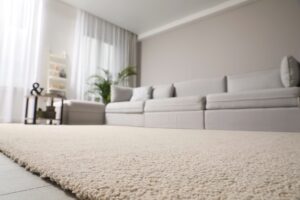 Carpets can be cozy: they can keep your feet warm and be nice to curl up on. But there’s a lot more going on with your carpet than comfort.
Carpets can be cozy: they can keep your feet warm and be nice to curl up on. But there’s a lot more going on with your carpet than comfort.
Carpets can trap pollutants and allergens like dust mites, pet dander, cockroach allergens, particle pollution, lead, mold spores, dirt, dust, and other toxins. Even toxic gases in the air can stick to them and settle in, then become airborne when you walk on the carpet or vacuum.
Advertisement
Removing carpets from your home may help improve lung health or lower the risk of breathing troubles. Instead of carpet, use hard floor surfaces like tile or wood and rugs, that can be removed and cleaned outside.
If you can’t tear up all of your carpets, then there are some steps you can take to reduce the risk. Have them deep cleaned every year with a dry steam cleaner and dried properly to limit the potential for mildew.
Do your best to keep the carpet out of the kitchen, bathroom, and entryways. These areas provide plenty of opportunity for carpets to become damp and dirty and create problems for breathing.
Use a hard plastic tray or rug that can be cleaned and dried for your entryway. Use a bathmat in the bathroom that can be hung and dried after use, and kitchen runners should be avoided for mats near the sink that can also be easily cleaned and hung to dry.
Advertisement
Carpets and rugs can collect and breed allergens that can influence lung health. They are also one of the most controllable ways to help you breathe easier.
Keeping a clean home, using a HEPA filter (High-Efficiency Particulate Air) vacuum, and air filters in the home can also help offer some added protection.
Consider your carpets and rugs if you’ve got a cough you can’t kick. They could be the culprit.
